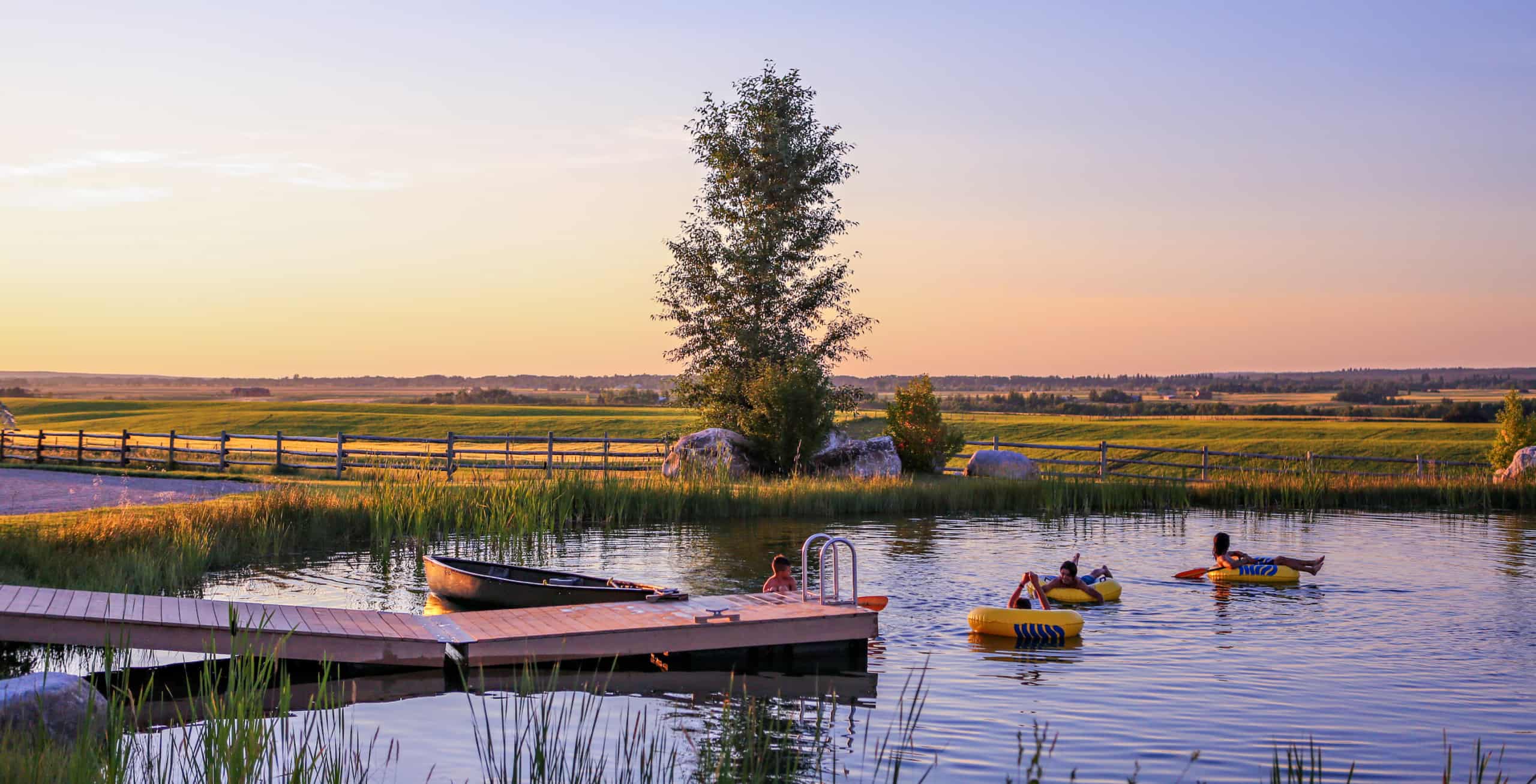
How to Build a Floating Dock in a Pond
If you live on a standing body of water such as a pond or a lake, you may be wondering how you can make the most of this pleasing water fixture. A waterfront home is perfect for family and friends who love swimming, fishing, paddling, and kayaking. Amenities like a dock make everything so much more convenient.
Floating docks can increase the use you get out of your lake or pond exponentially. There are many recreational and aesthetic benefits of having a dock, and our guide will take you through all you need to know about building a floating dock for a pond.
What is a Floating Dock?
Also known as a floating pier, a floating dock is a platform built to float on top of the water’s surface. The dock will have ramps supported by buoyant and air-tight pontoons. They keep the dock level as the water moves or fluctuates.
Floating docks come in many sizes, layouts, and weights, depending on the material used to build them. They can consist of wood, plastic, and even some metal components, but all parts need to work together to form a safe, sturdy, and durable platform.
Most floating docks are removable and customizable, meaning you can take them apart and rebuild them according to the season. Many people choose to keep their docks out during the spring and summer months and dismantle them for storage during harsh winters. If your climate is prone to ice and snow in the winter, you’ll more than likely make the most use of your floating dock and pond facilities during summer.
In the United States, waterfront homes have a significantly higher value than other homes, so a feature like a floating dock will likely put your property’s asking price even higher on the market. Companies like ours have designed easy-to-install and removable decking and docking. Contact us for more on how to build a floating dock on a pond today.
When Should You Use This Type of Dock?
Floating docks are incredibly versatile and function in both high and low waters. Many people build a floating dock on a pond or lake used for swimming and wading, as it is easy for someone to get on and around the platform.
You’ll often find floating docks in two main scenarios:
- A Pond or Lake with Very Deep Waters
If the depth of your pond is more than 8 feet, then a floating dock will be your best and most cost-effective option for a platform. Installing sturdy legs that are long and wide enough to hold the weight of a dock and the people using it will cost a lot of time and money. You will also need to factor in the actual weight of water and the shift in energy or any strain it may cause the legs if there’s a storm or strong movements.
With a floating dock, you have fewer elements to worry about, and you won’t have to maintain the legs and support structure every time you use it.
- A Pond or Lake with a Soft and Unsupportive Bottom
Another reason to learn how to build a floating dock in a pond is if your pond has a soft bottom that won’t support structures for more than a short period. Many lakes and ponds have mucky bottoms that resemble quicksand. A floating dock bypasses these challenging bottoms.
It’s important that the installation of docks and piers at all water bodies follow all safety precautions and regulations to ensure that the platform is suitable for the venue. You will need to know how to build a floating dock for a pond efficiently and correctly.
Why Are They Good For Ponds?
A floating dock might not be ideal for a waterbody with lots of traffic, but it is the fitting choice for a pond or a lake only used by a group of family and friends.
Some benefits of building this type of structure on a pond include:
- Affordability: As mentioned above, floating docks are one of the cheapest ways to build a pier, and most can be DIY-ed. If you know how to build a floating dock in a pond by yourself, you can save big. But even if you don’t, these installations are more affordable than fixed docks.
- Customizability: Most floating docks are customizable. Build it according to your own needs and specifications to fit your pond.
- Relaxation: Those who enjoy the soothing ebb and flow of water will relish getting rocked on the dock as the structure moves along gently with the water’s waves.
- Water Level Adjustments: Because the dock moves with water, you will always find that the boat or kayak attached to it will rise along with the pond’s water level too. The adjustability makes floating docks ideal for areas that see significant changes in water level.
What Do You Need to Build One?
At Decks & Docks, we have all the hardware, tools, and accessories you’ll need to build a floating dock. Our easy-to-use DIY kits will get you started. Choose from some of the most popular synthetic and composite decking brands like Trex and WearDeck to get started. We also have a 12-step guide that you can use to walk you through the process of how to build a floating dock in a pond.
You will need the right-sized decking boards, end pieces, floats, and nuts and bolts to build your dock.
Get Started Today
Now that you know about floating docks and the benefits of these structures, reach out to our friendly Decks & Docks team. We can answer any more questions you may have about building a floating dock in a pond and choosing the right supplies.
